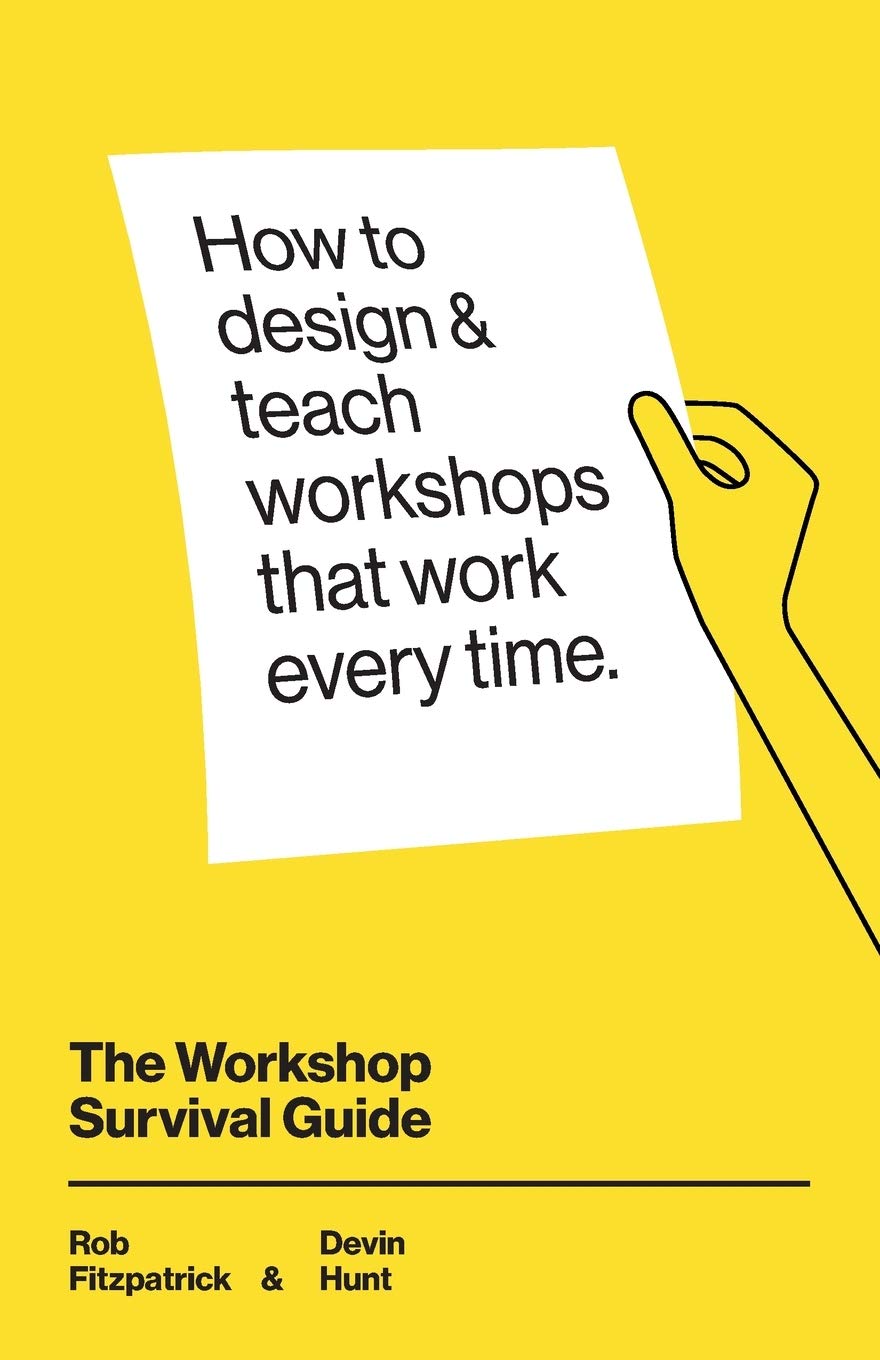In my day job, I think a lot about how to run training sessions for customers. Obviously, I want our training sessions to be as engaging and informative as possible for our customers, but I also need our sessions to be structured in such a way that anyone can pick it up and deliver it with minimal prep time… and then I need to get people to actually sign up! Having worked primarily as an engineer for most of my career, teaching, content creation, and marketing are not muscles I’ve had to flex often. Thankfully, when I found myself needing to bulk up, a colleague recommended a good supplement.

The Workshop Survival Guide: How to design and teach educational workshops that work every time by Rob Fitzpatrick and Devin Hunt is a book by two authors with two halves. The first half guides you through how to design a workshop, while the second runs through the practicalities of actually standing up in front of a group of strangers and delivering the thing.
I found the first section to be invaluable, filled with advice I could immediately put into practice. In broad strokes, this section describes a workflow for designing a workshop that I’ve found to be effective and repeatable. The authors focus on general advice that I believe would work for any topic, from history to husbandry, giving you the framework you can fill in with your own expertise.
The second half was less useful to me. We run all of our sessions remotely, so I don’t need to worry about the placement of chairs or dealing with unexpected fire alarms. However, there was some guidance on dealing with certain personality types that I found enlightening. I expect there will be a time when I can revisit this section and get more out of it.
As you might expect from a book on teaching, it is very clearly written throughout. Each chapter has a list of lessons learned which are useful for referring back to.
My key takeaways:
- Good teaching comes from good planning, not pure delivery skills (though of course that helps).
- A good skeleton design document can not only be easily converted into your slide deck, but also into marketing materials for your session.
- Q&A sections are only good for filling time.
Overall, I would recommend this book to anyone who is running something that looks vaguely like a workshop, but you can probably skip the second half if you’re not running an in-person practical session.
